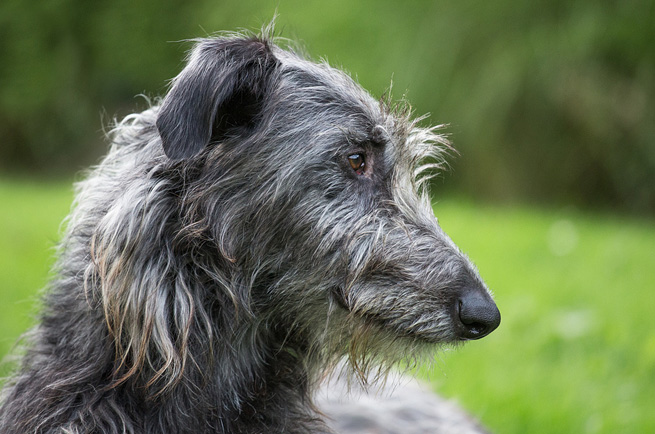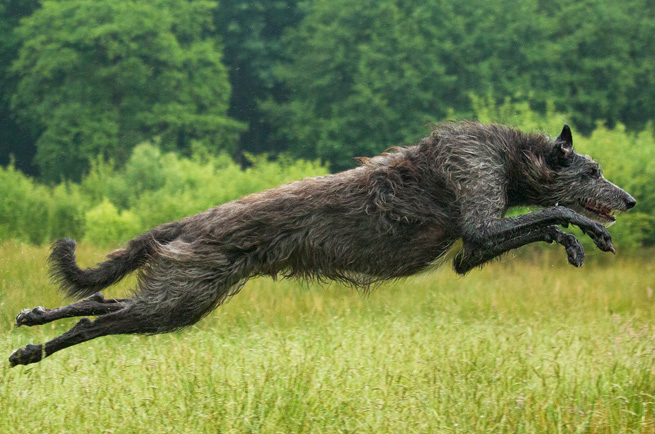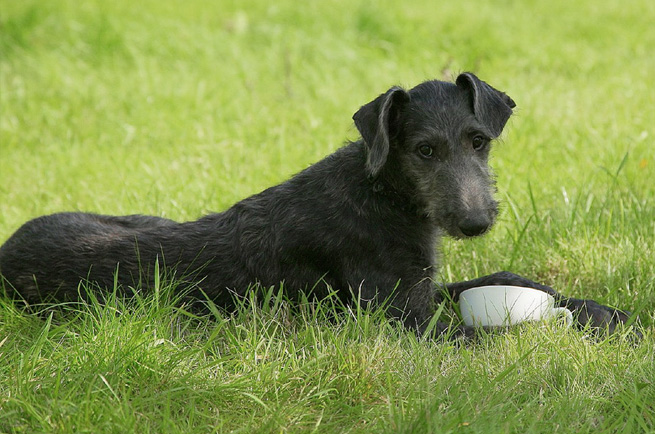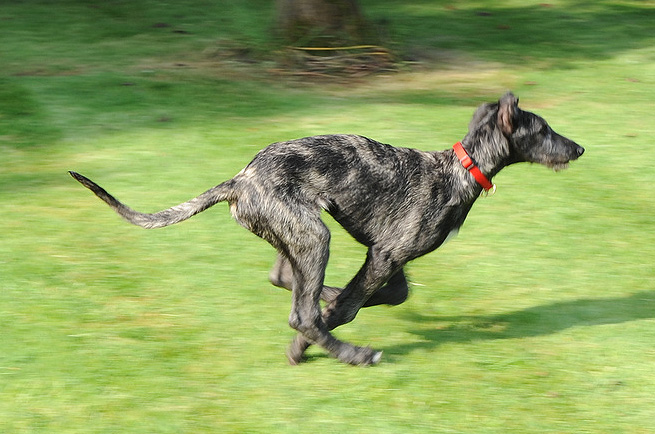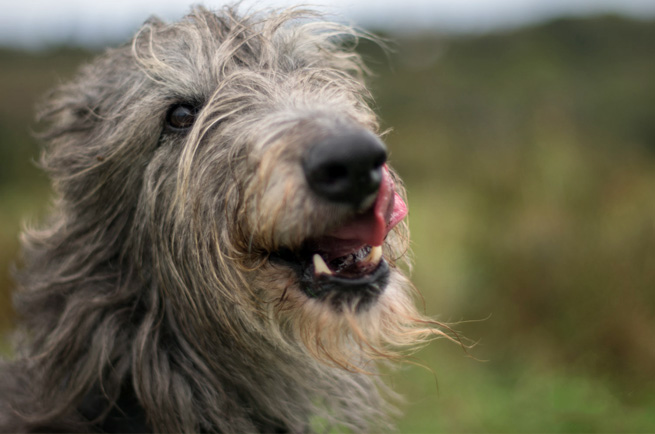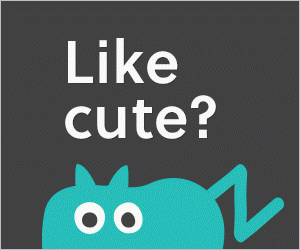Colour
Deerhounds come in a variety of colours. The more common colours are a dark blue and grey, but there is also a brindle and yellow coat, some sandy tones and reds and fawns and some Deerhounds also have some white too.
Height / Weight
Dogs should measure over 76cms at the withers and ideally weigh about 45.5kgs. Bitches should ideally measure over 71cms at the withers and weigh about 36.5kgs.
Health
It is best to buy a screened puppy as breeders are working to screen out liver shunt problems. Bloat is unfortunately a frequent cause of death to be aware of in your Deerhound.
Intelligence
Deerhounds are intelligent but gentle souls. They are eager to please and want to learn but respond best to calm and gentle commands.
Suitability (Children)
Medium
Feeding
The Deerhound's diet should be monitored as they tend to have rapid periods of growth as a puppy. It will be best to get advice from a breeder to make sure you are feeding your dog the right amount of food. The Deerhound is a big dog and needs a fair amount of fuel so twice daily feeds with good nutrition are important to maintain their size and activity levels.
Excercise
The Deerhound is very athletic and requires plenty of exercise. As a puppy you will need to restrict their activities but as an adult the Deerhound loves to run free.
Ailments
It is best to buy a screened puppy as breeders are working to screen out liver shunt problems. Bloat is unfortunately a frequent cause of death to be aware of in your Deerhound.
Grooming
The wiry coat of the Deerhound is pretty low maintenance, but it will need regular grooming at least once a week. The coat may need to be hand plucked once or twice a year depending on its condition, if you are unsure of how to do this make sure you take your dog to a breeder.
Grooming Frequency
More than once a week
Trimming
Plucking 1-2 times a year

